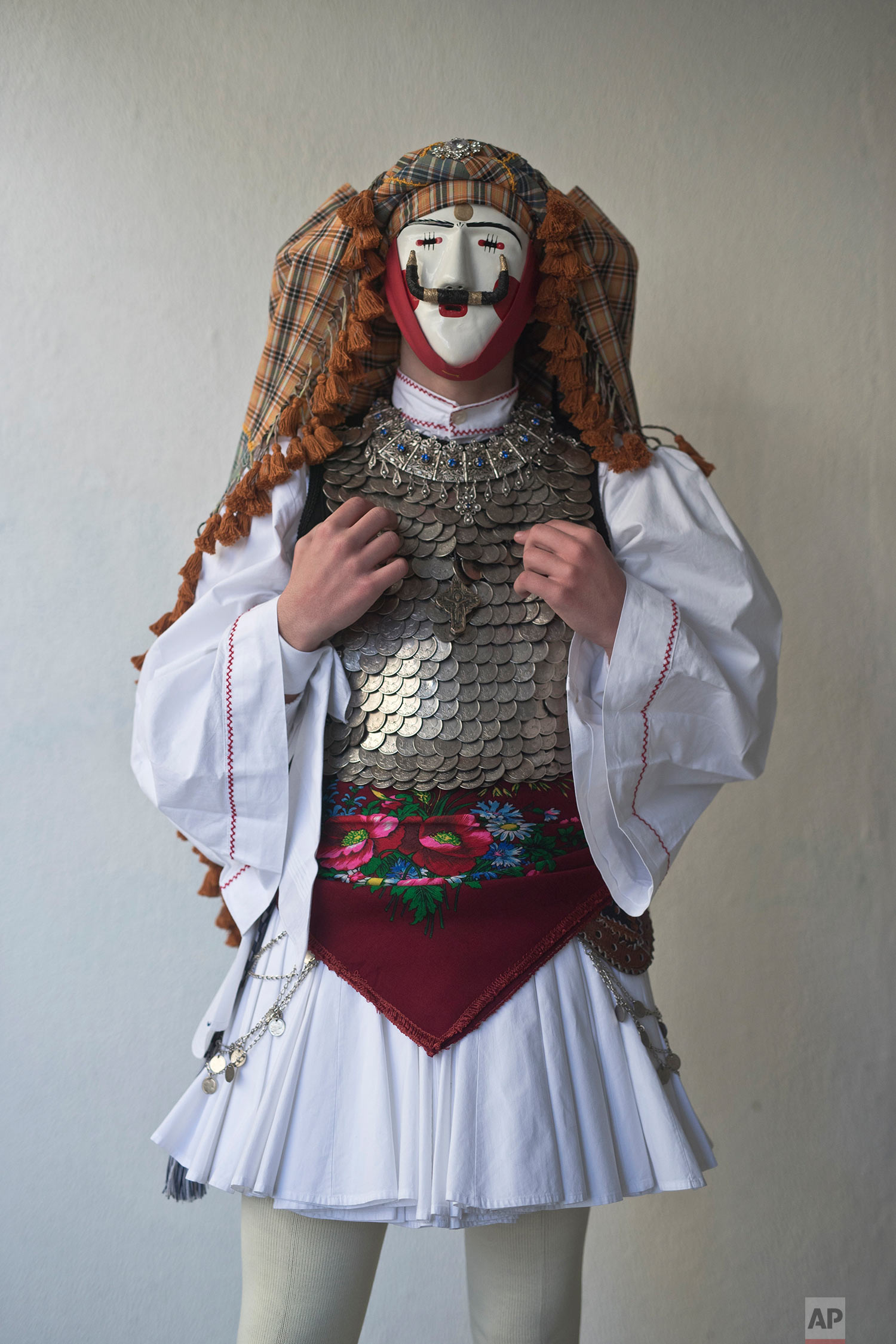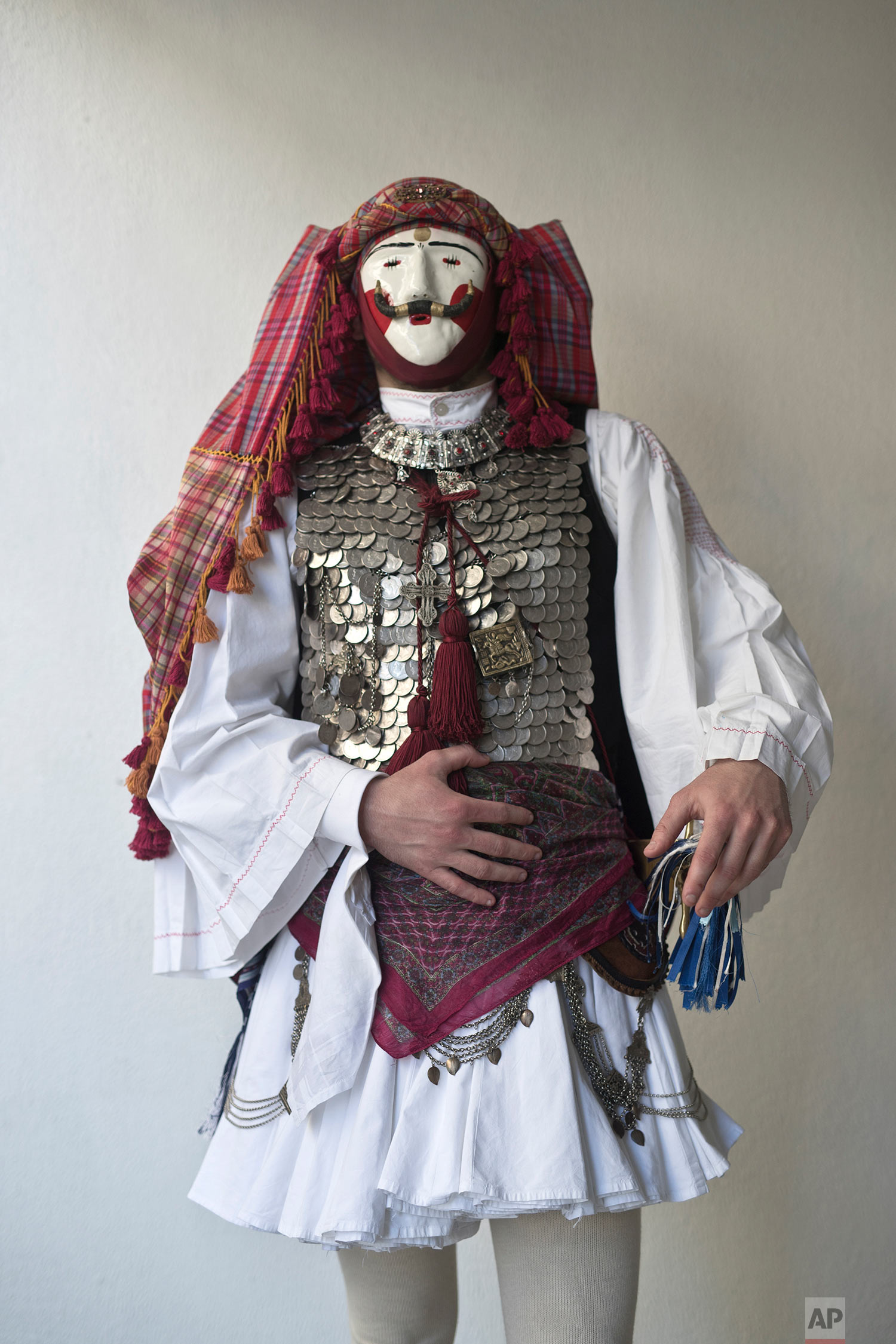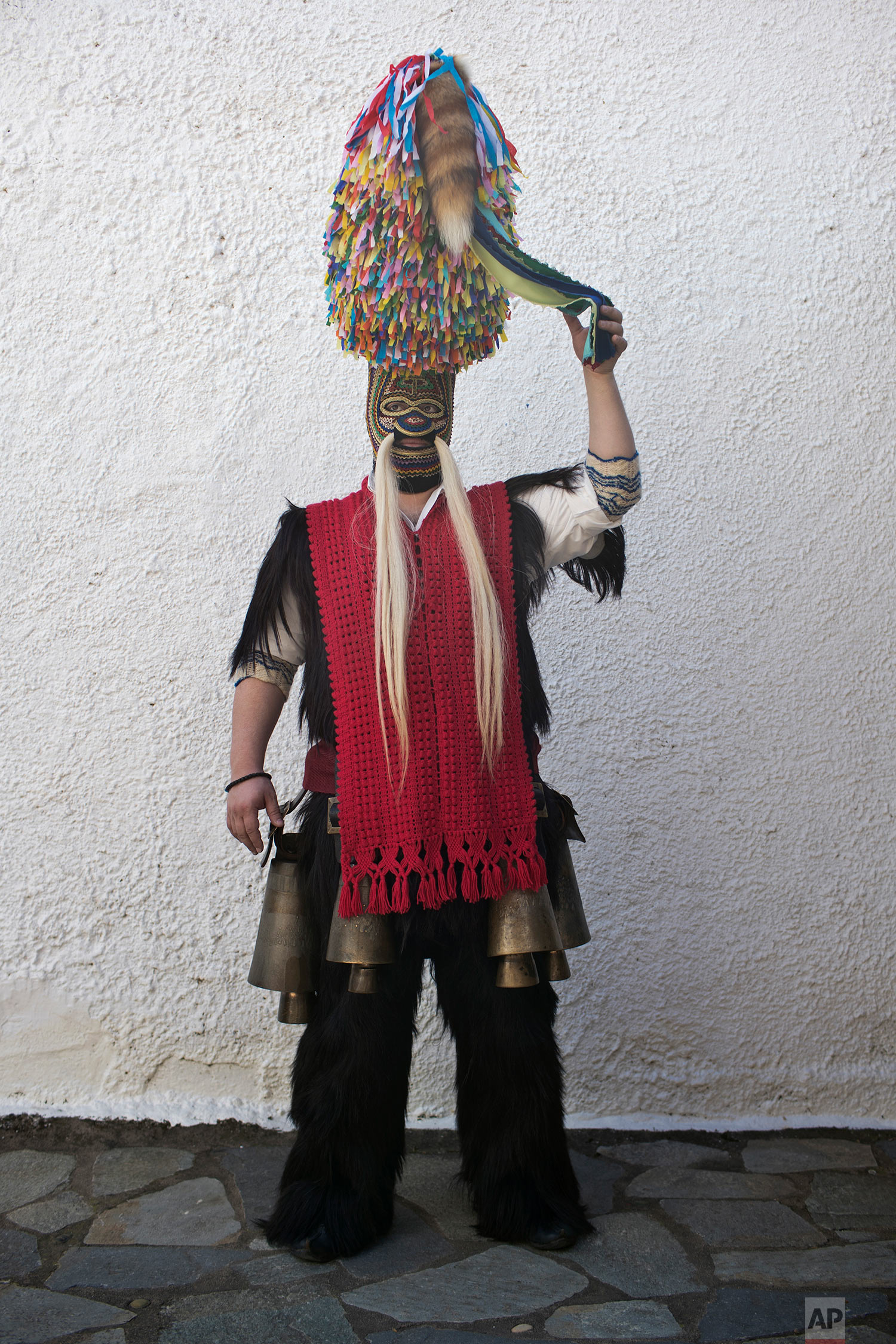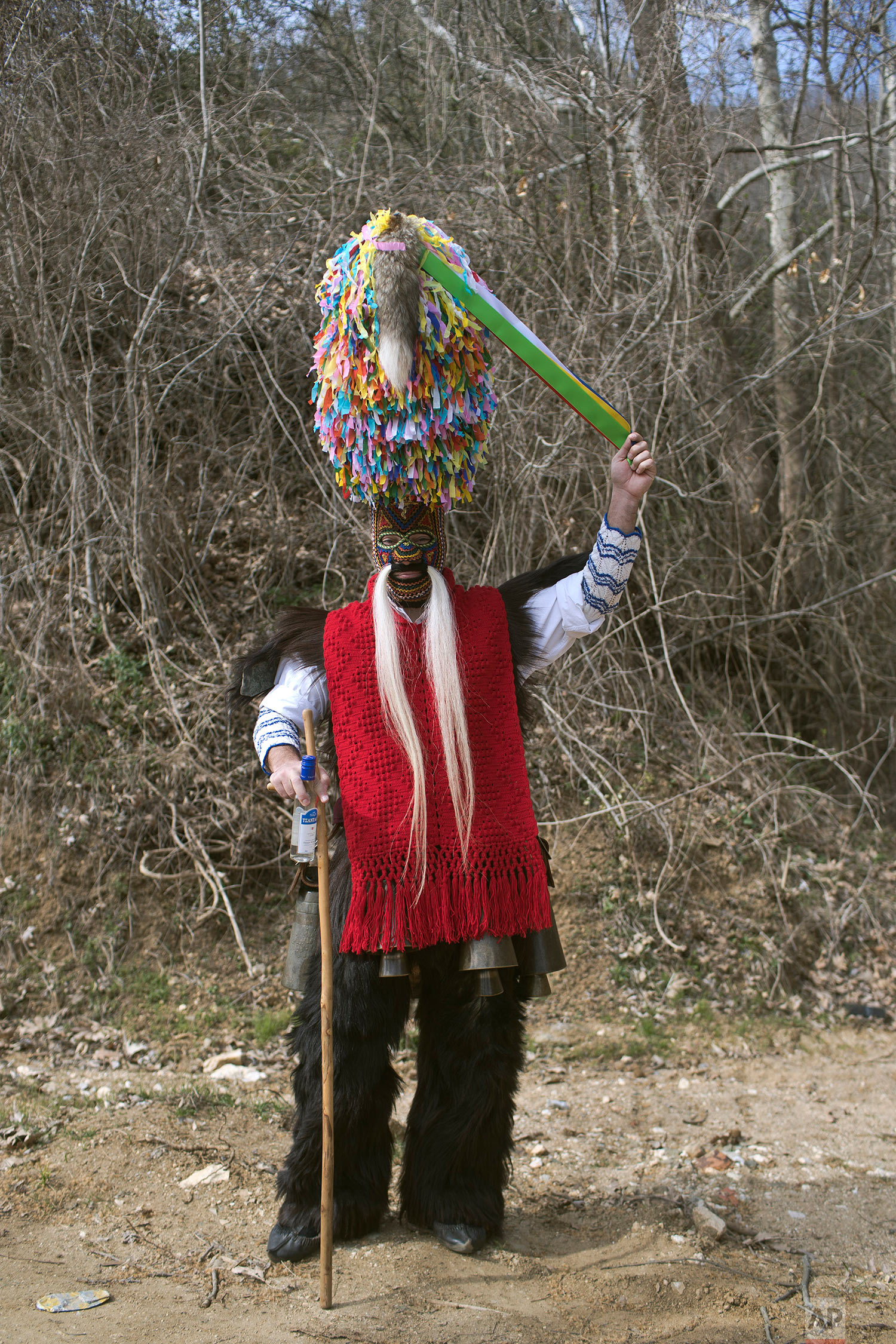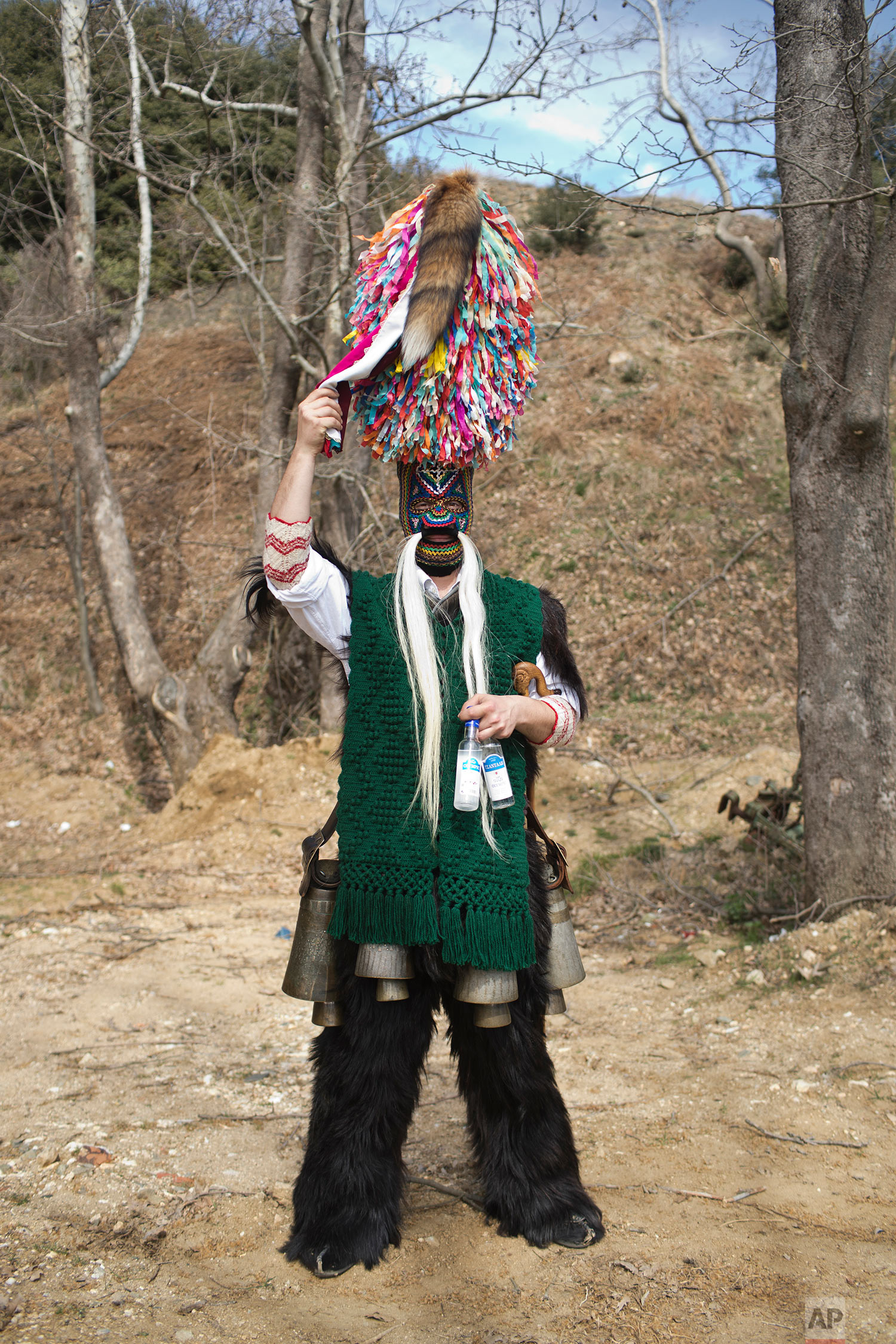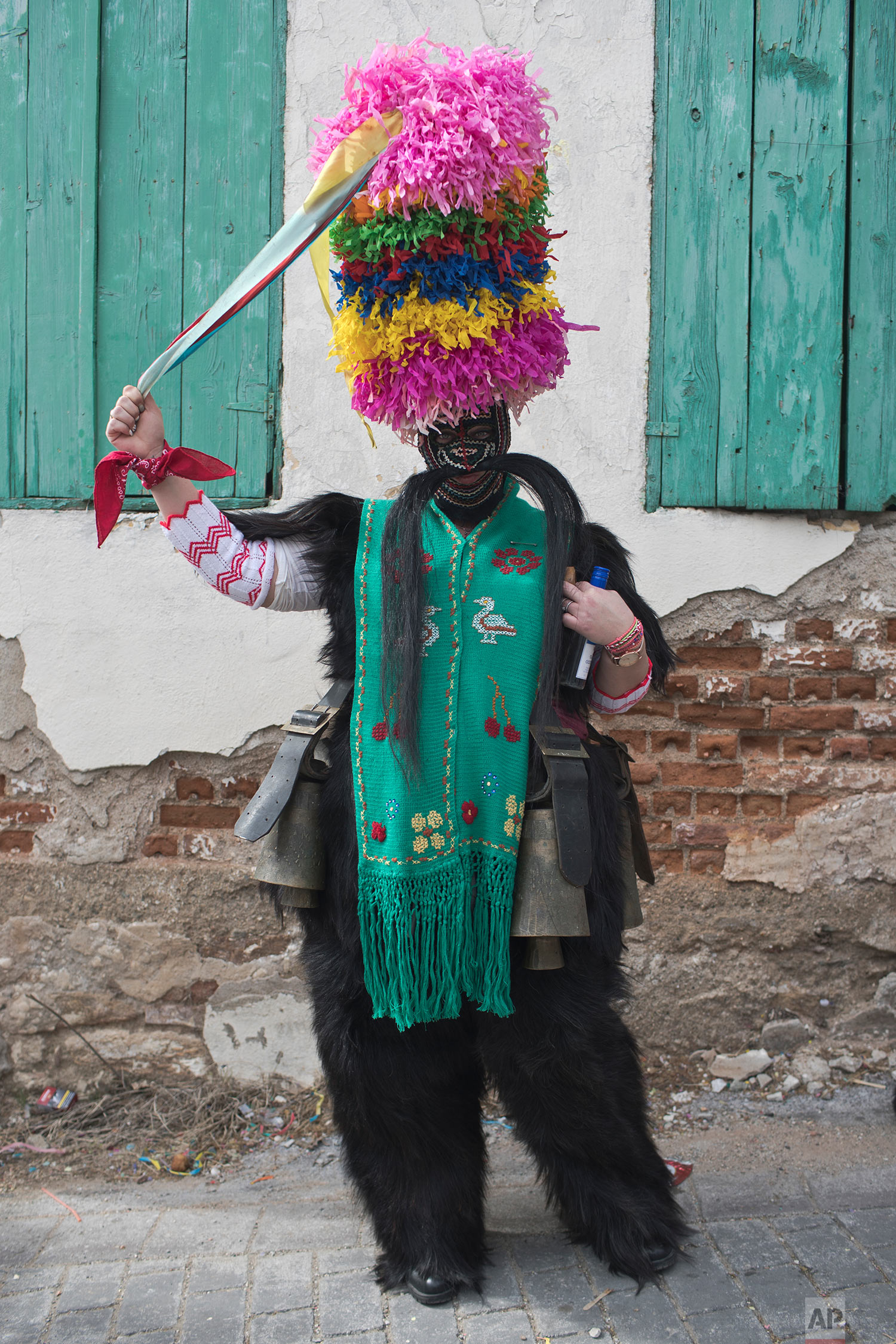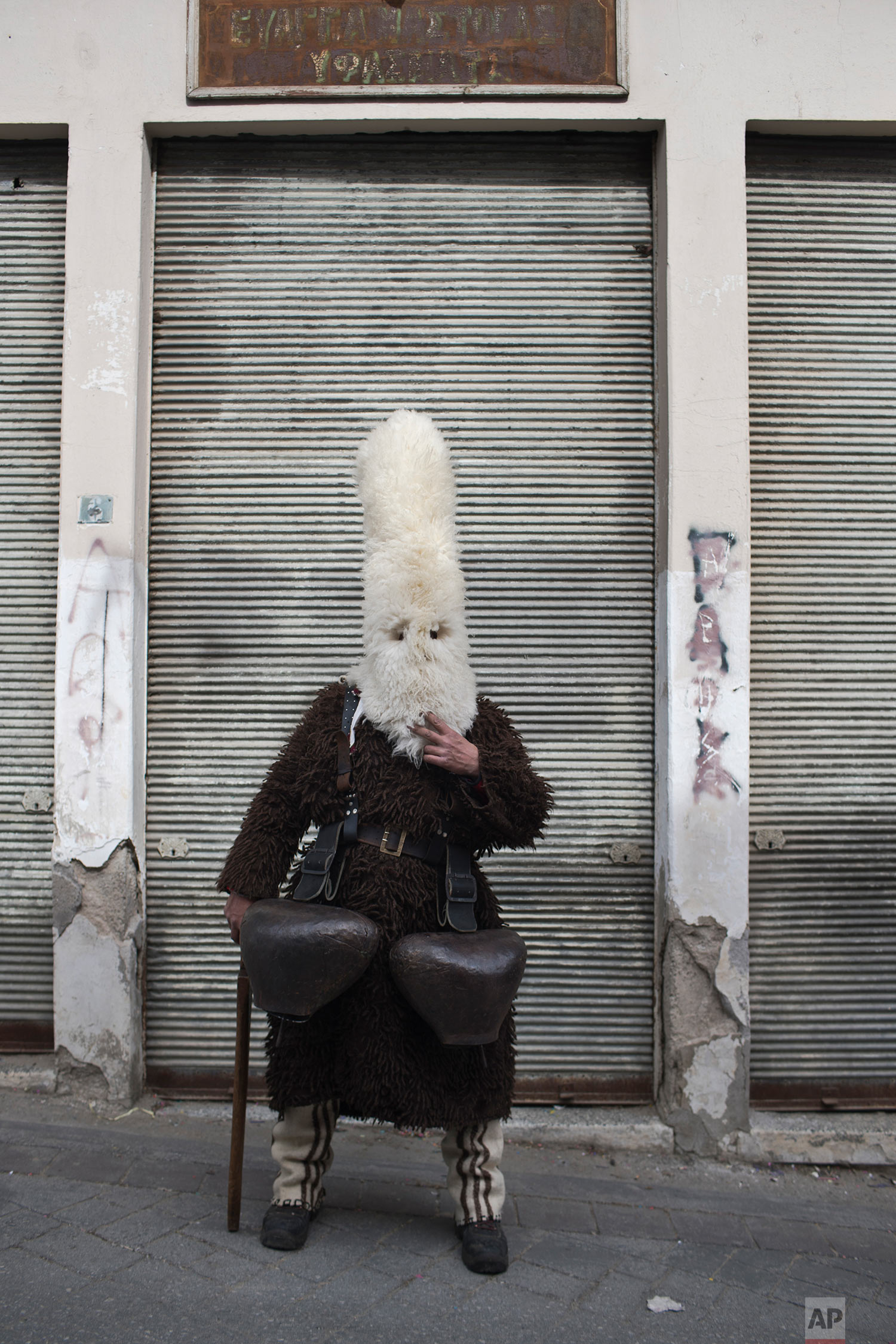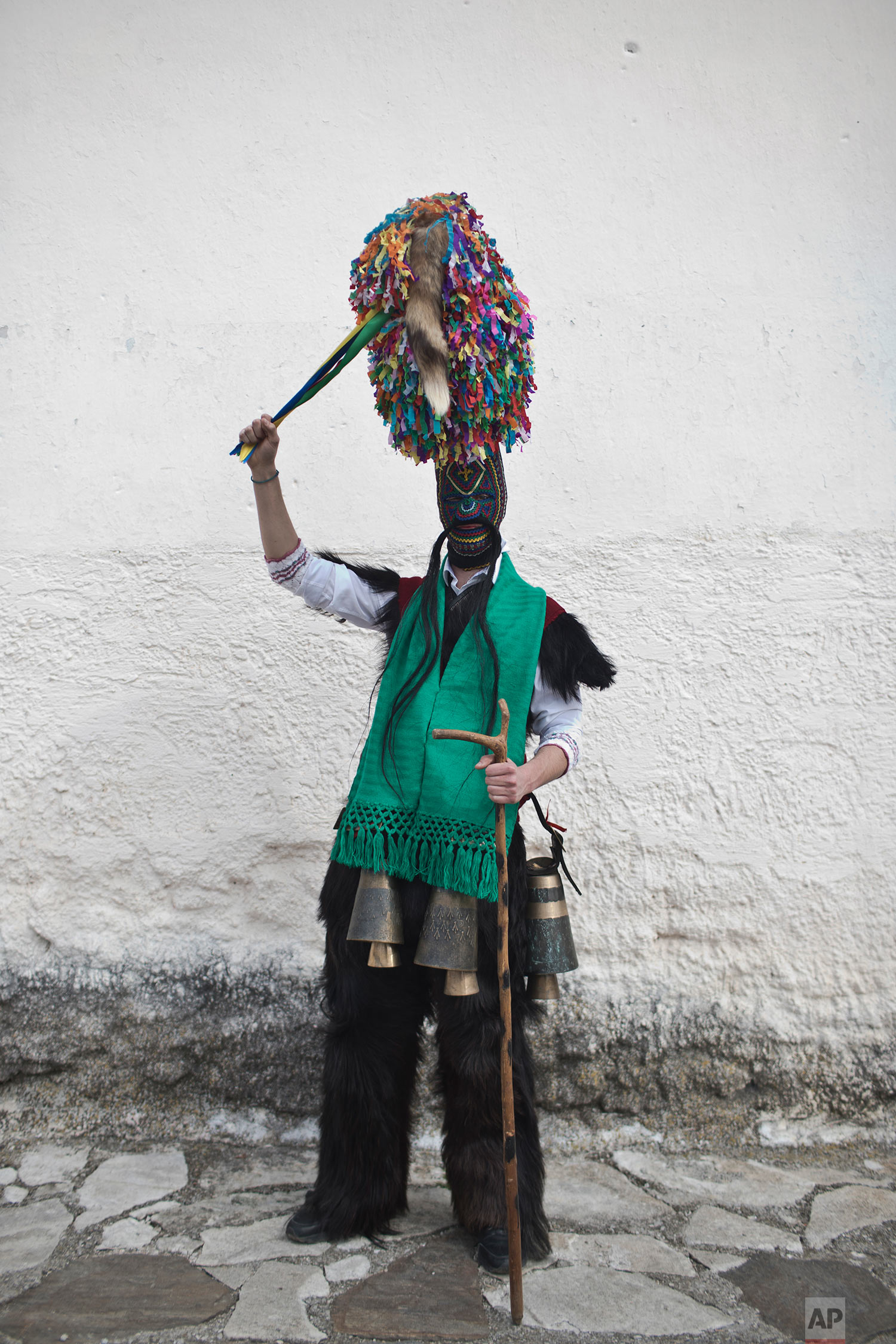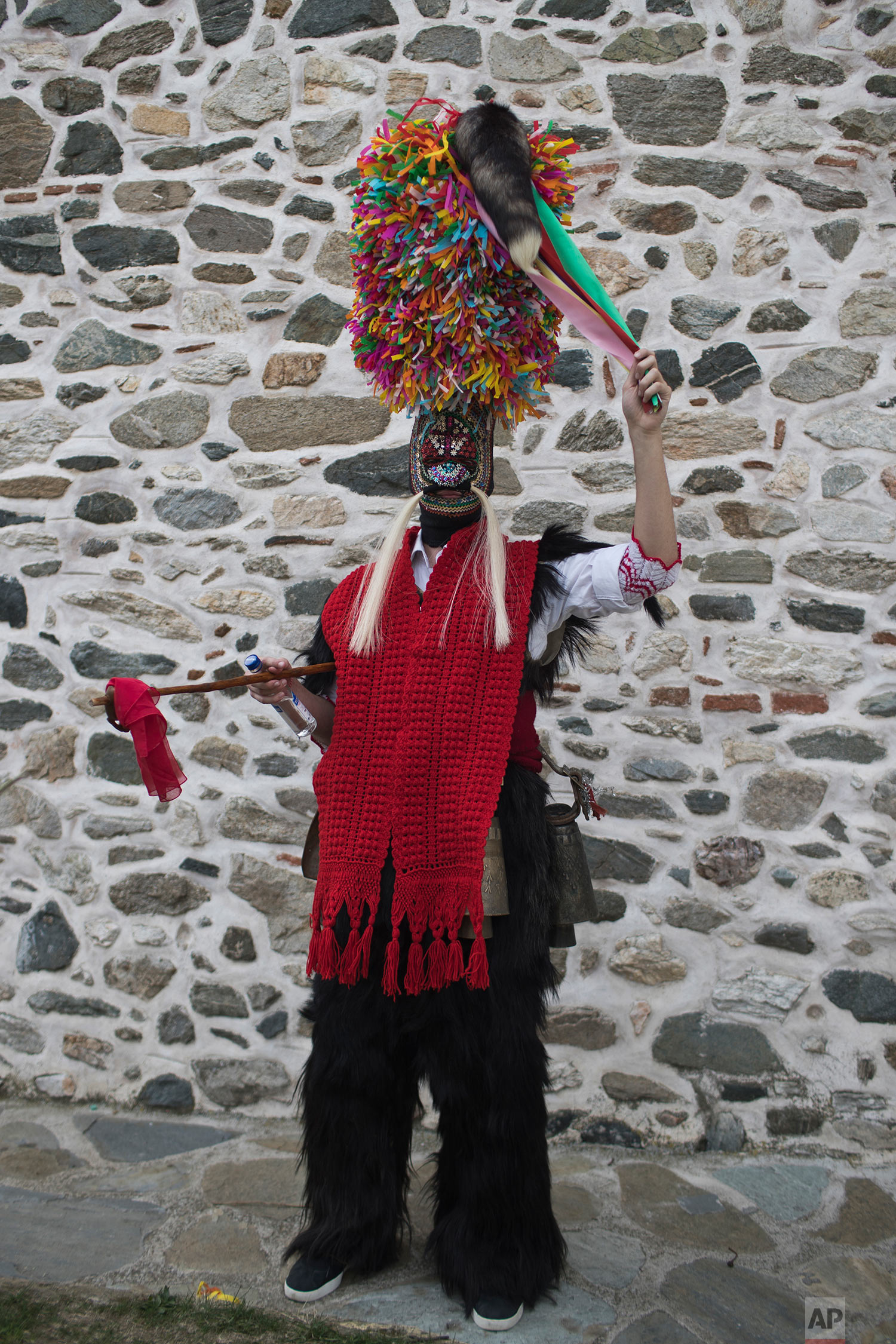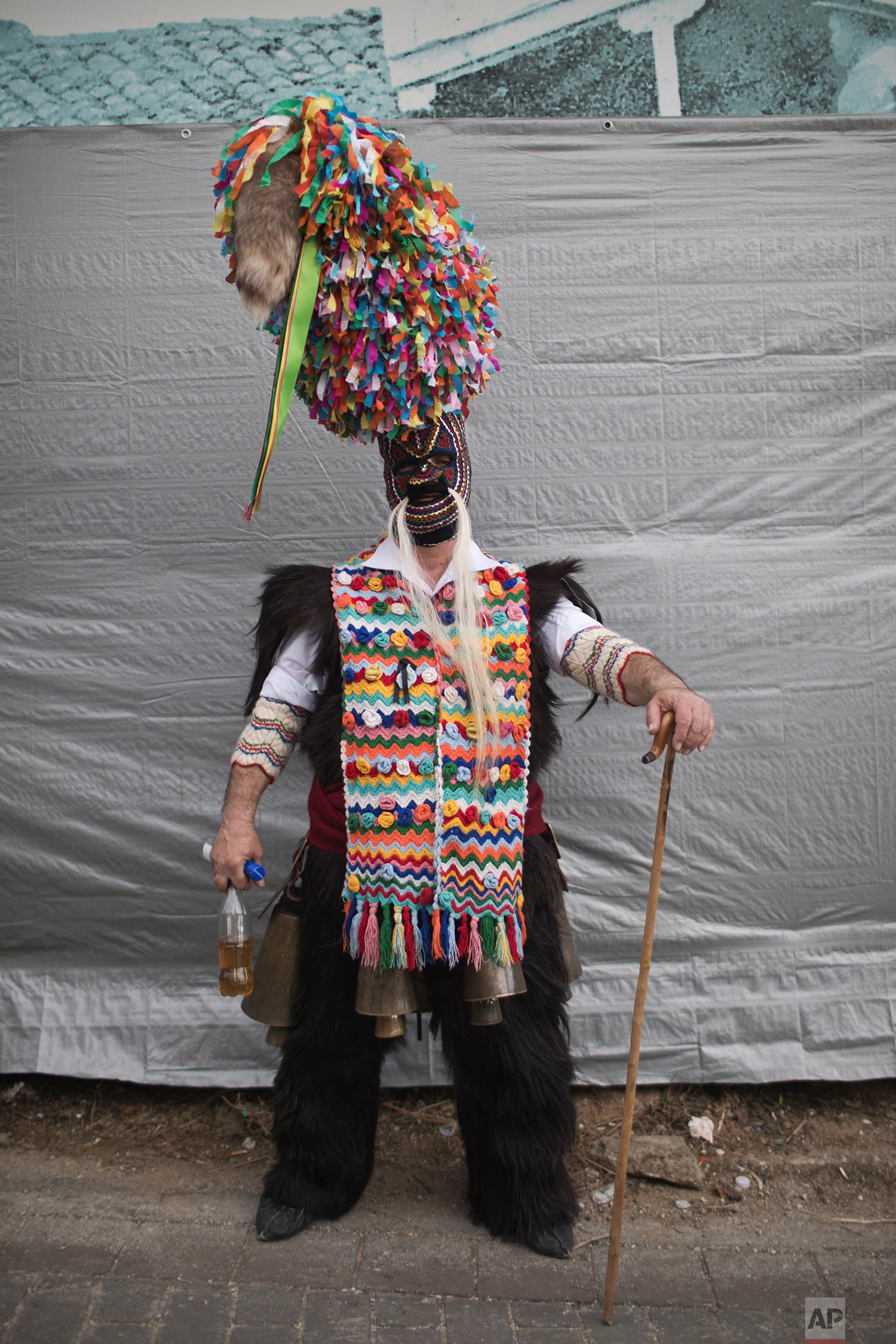Greek carnival showcases variety of ancient traditions
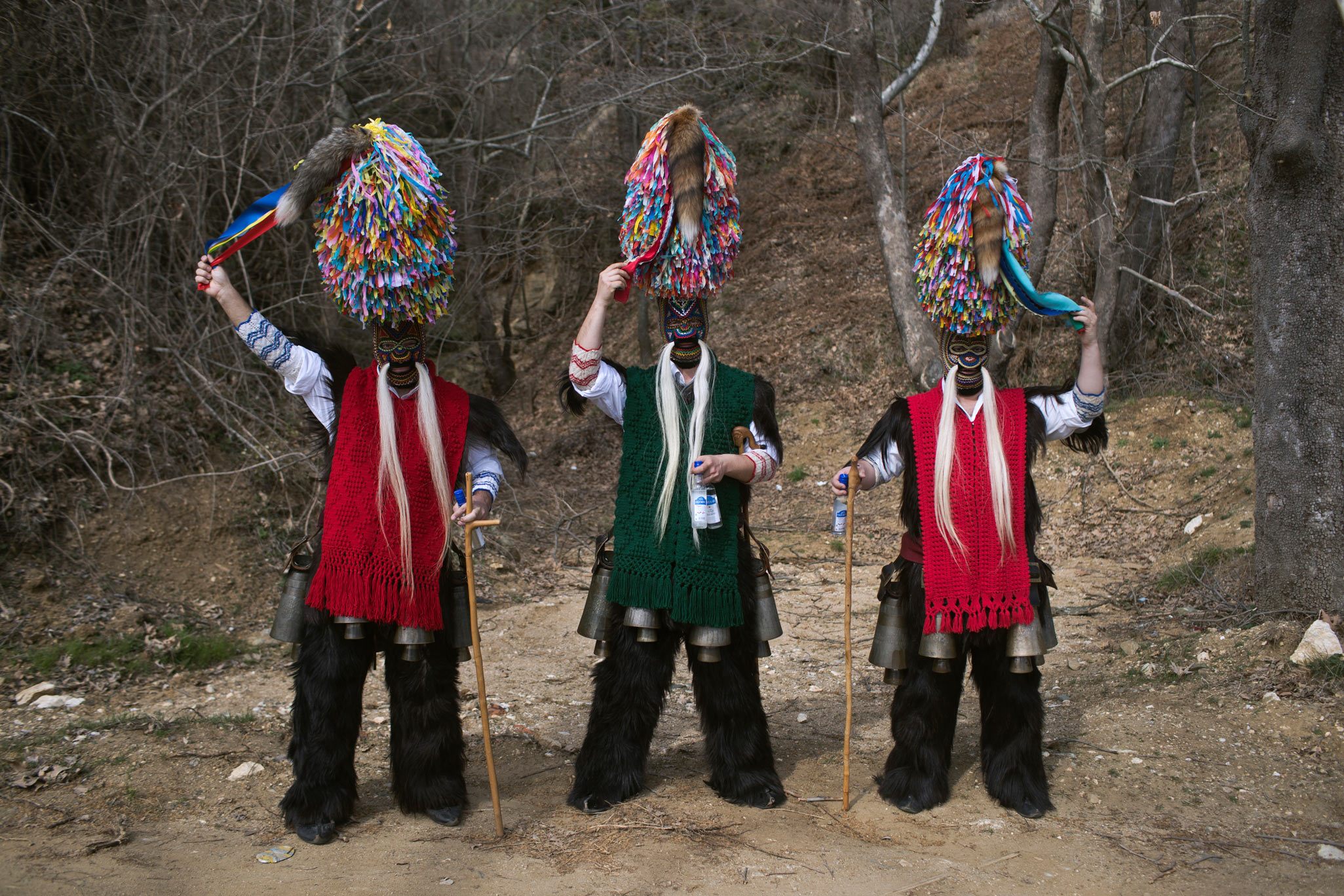
Greek carnivals at this time of year can be modest but they showcase ancient rites and traditions as well as providing reminders to some bloody moments in the country's modern history.
"Clean Monday" in the Greek Orthodox calendar, marks the beginning of Lent. It is also, in many places, the culmination of the carnival season; in others, it ends on Sunday.
It can be confusing.
Wherever they lie in the calendar, carnivals in large Greek cities are a pale, garish imitation of the world's most prominent fiestas, even in the western city of Patras, Greece's third-largest, which holds the largest festivities in the country. Still, in smaller places, a large variety of customs, many dating from ancient times, are still celebrated.
There are common threads. Masks for example. And satirical songs, which can often be explicit.
In northern Greece, two of the most celebrated carnival customs are found in the mountain town of Sochos, just northeast of Thessaloniki, and in Naoussa, southwest of Greece's number 2 city.
A dancer gets dressed at his home as he prepares to compete in the Boules and Genitsaroi carnival parade in the town of Naousa, northern Greece on March 10, 2019. (AP Photo/Petros Giannakouris)
Dancers with masks and traditional costume prepare to perform in the Boules and Genitsaroi carnival parade in the town of Naousa, northern Greece on March 10, 2019. (AP Photo/Petros Giannakouris)
Spectators look on as a man wearing a goat hide with bells around his waist and a mask that includes a meter tall, ribbon-covered formation topped with a foxtail, also called a bell wearer, participates in a Clean Monday festival in the village of Sohos, northern Greece on March 11, 2019. (AP Photo/Petros Giannakouris)
Dancers with masks and traditional costume perform in the Boules and Genitsaroi carnival parade in the town of Naousa, northern Greece on March 10, 2019. (AP Photo/Petros Giannakouris)
Both carnivals involve troupes of dancers and music played by just two instruments: zournas, a woodwind instrument of Asian provenance that is common throughout the Balkans, North Africa, Middle East and central Asia, and daouli, a bass drum. They also involve very elaborate costumes, often passed on from one generation to another.
In Sochos, the celebration culminates on clean Monday. People wearing goat or lamb hides with bells around their waists and masks that include a meter (over 3 ft.) - tall, ribbon-covered formation topped with a foxtail, hold a procession through the town to the sound of traditional music before dancing.
The costumes can be worn by anyone — men and women, grown-ups and children. But men wear the heaviest of the bells, five of them strapped around the waist, weighing 18-20 kilograms (40-45 pounds).
In fact, the costumes and bells included can be worn in Sochos on the day after Epiphany — January 6. It wouldn't be particularly weird.
In Naoussa, whose carnival is called Genitsaroi and Boules (soldiers and brides) culminates on the Sunday before Clean Monday. The twist is that the brides in question are always young men, a custom that reflects ancient coming-of-age rites.
The Genitsaroi (Janissaries) were Greek boys forcibly taken from their families by the occupying Turks and raised and trained to be elite troops at the service of the Ottoman Empire. From the mid-17th century, this abduction of boys stopped and Janissaries became a hereditary corps. They came to a bloody end though when the Sultan eliminated the corps by slaughtering them in 1826.
Like the Sochos Carnival, the Naoussa fiesta has elaborate costumes and masks, the masking in this case reflecting the comings and goings to the nearby mountains, where irregular troops fighting the Ottoman rulers were based.
The masked "soldiers" and "brides" converge in the town's main square. The soldiers' coin-covered chests rattle as they shake to greet other groups. Eventually the masks are removed. The coins and masks are passed from generation to generation.The parade ends with a solemn dance commemorating the razing of the city by the Turks in 1822, during Greece's war of independence.
Greece became independent in 1830, but the north, what is now the province of Macedonia, did not join Greece until 1912.
These carnivals may not match Rio de Janeiro's but customs sure do matter.
A grandfather helps a young bell wearer with the costume in the village of Sohos, northern Greece, to participate in a Clean Monday festival on March 11, 2019. (AP Photo/Petros Giannakouris)
Dancers with masks and traditional costume perform in the Boules and Genitsaroi carnival parade in the town of Naousa, northern Greece on March 10, 2019. (AP Photo/Petros Giannakouris)
Participants in the Clean Monday festival ride in a pick-up truck at the village of Sohos, northern Greece on March 11, 2019. (AP Photo/Petros Giannakouris)
Dancers with masks and traditional costumes perform in the Boules and Genitsaroi carnival parade in the town of Naousa, northern Greece on March 10, 2019. (AP Photo/Petros Giannakouris)
Dancers with masks and traditional costume perform in the Boules and Genitsaroi carnival parade in the town of Naousa, northern Greece on March 10, 2019. (AP Photo/Petros Giannakouris)
A mother wearing goat hide with bells around here waist and a mask that includes a meter tall, ribbon-covered formation topped with a foxtail, holds her baby as her five member family prepare to take part in a Clean Monday festival in the village of Sohos, northern Greece on March 11, 2019. (AP Photo/Petros Giannakouris)
A man wearing a goat hide with bells around his waist and a mask that include a meter tall, ribbon-covered formation topped with a foxtail, also known as bell wearer, participates in a Clean Monday festival at the village of Sohos, northern Greece on March 11, 2019. (AP Photo/Petros Giannakouris)
Text from the AP news story, Greek carnival showcases variety of ancient traditions, by Demetris Nellas and Petros Giannakouris
Photos Petros Giannakouris









